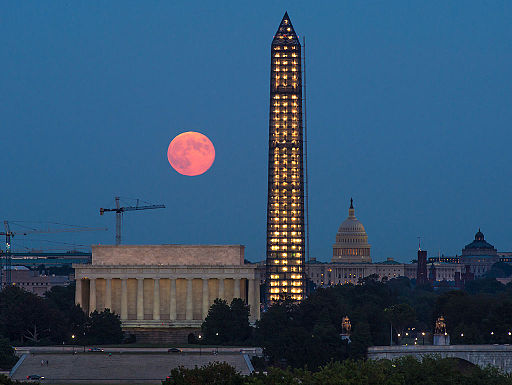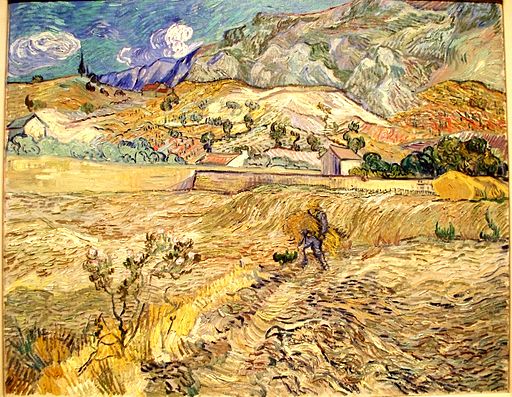Moon Dreams
With the full moon coming on Monday, September 24, it’s fair to wonder how much influence the moon, the planets, and the stars have on earthly lives and events. This full moon is known as the Harvest Moon for obvious reasons, at least in the Northern Hemisphere where the agricultural harvest begins in September. Linking the moon to telling time is sensible considering that through most of history people did not have or require time pieces accurate to minutes and seconds. That would await the Industrial Revolution. Before then, knowing the months by the phases of the moon and the hours by the daily movements (as it appeared from Earth) of the sun and the stars was good enough.

A Harvest Moon rises over Washington, D.C., on September 19, 2013. Photo by Bill Ingalls for the National Aeronautics and Space Administration (NASA).
“Moon Dreams”, performed by Glenn Miller leading the Army Air Force Band in 1944, was written by Miller’s long time pianist Chummy MacGregor, with lyrics by Johnny Mercer.
Feeling in control is comforting to them, even though oddly enough they are ceding control to an impassive universe. This is where the all powerful leader comes in, to reassure them that they are indeed still at the center of the universe and endowed by it with special qualities, rights, and privileges. The more thoughtful among them might reflect that special rights are accompanied by special responsibilities, but most are not troubled by such an uncomfortable thought, nor by the exclusion of The Other from the universe’s benevolence, as interpreted for them by their leader. What for most people is a harmless diversion in the funny papers becomes for a few true believers another reality, with its own truth they are determined to foist on everyone else. Ordinary people don’t take the true believers seriously at first, and then too late the decent, ordinary folks realize their fanatic neighbors weren’t kidding with their foolish, dangerous nonsense.
— Ed. 


